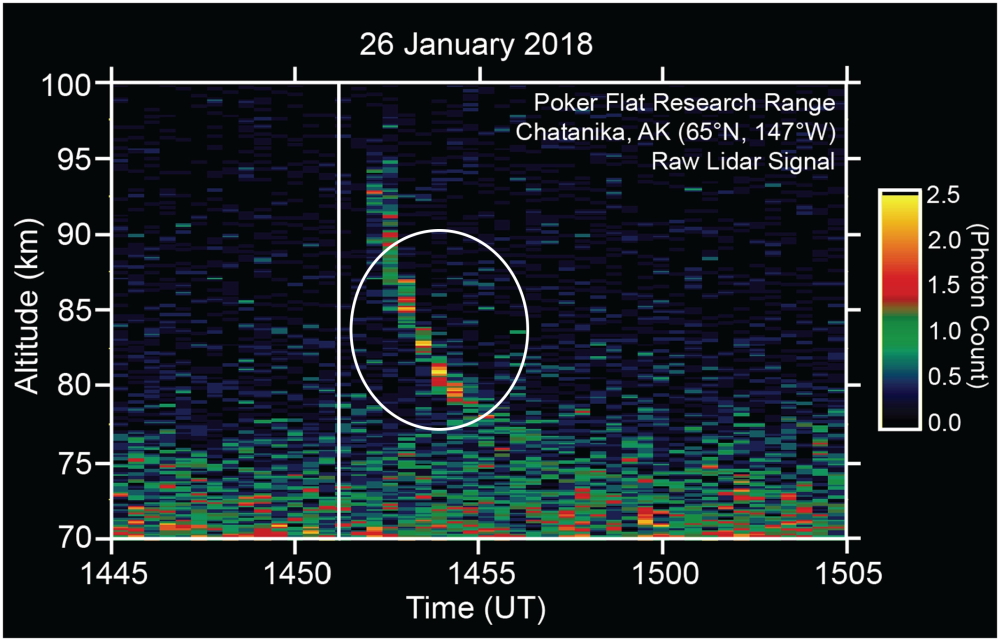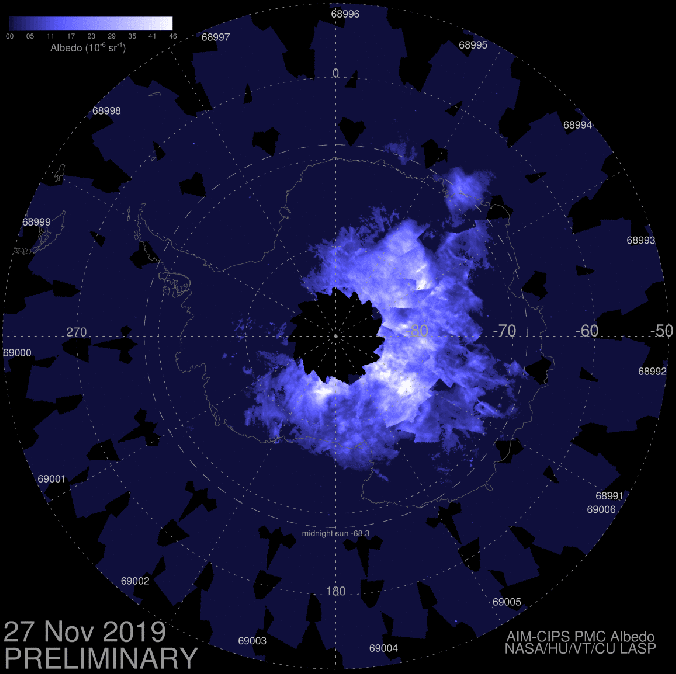The season of noctilucent clouds begins in Russia. From about May to September, shortly after sunset or shortly before dawn, beautiful bright thin clouds can be observed in the sky, illuminated by the sun, when all other, lower clouds are already or still in the shade. Despite the fact that scientists have been observing these clouds since the late 19th century, there is still a lot to learn about them. And, in addition to observations in various ranges from the surface and from space, active experiments are also being carried out. In early 2018, NASA launched a suborbital geophysical rocket, which sprayed 220 liters of water at an altitude of 85 km, creating conditions for the formation of noctilucent clouds.

Two missiles with tracers for observing the wind at altitude, one missile with water. Green beam - lidar (laser radar). Photo NASA's Wallops Flight Facility / Poker Flat Research Range / Zayn Roohi 1880-. 1883 . , , , 1885 Nature. , , , 1 1850. , , , 100 (0.0001 ) , 76 85 . 50 1,3 , . 50° ( ) , , , , .
, , , . , Super Soaker ( ): 26 2018, , , 220 85 .
152 42 , 0,7 , .

, , . 1962 Saturn I Highwater - 167 86 (!) .

Highwater
, .
Super Soaker, , . 18 , , , .

- . . Richard L. Collins et al.
, 26° C . , , , - , , , , .
Super Soaker , . - , , - , , , , 20% .
Since 2007, the special NASA satellite Aeronomy of Ice in the Mesosphere (AIM) has been observing the noctilucent clouds.

"Planetary wave" of noctilucent clouds in the southern hemisphere (there their season is from November to February)
In conclusion, it is worth noting that noctilucent clouds look very beautiful from the ground, photographers love to shoot them, and you should also look at the sky after sunset or before dawn.